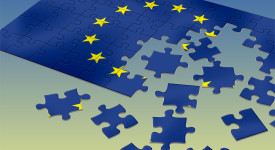The European Commission and the head of European diplomacy, Federica Mogherini, are proposing increasing military mobility within the European Union as part of the drive to protect EU citizens and improve security environment. The Commission is about to take steps to address the obstacles, which complicate the movement of military equipment and staff across the bloc with the aim of facilitating and expediting their mobility to react in a fast and effective way to internal and external crises.
“European citizens understand that only together, as a Union, can we tackle the security challenges of our times. Cooperation inside the European Union and with our partners has become a must. There is a growing demand for our Member States to coordinate and work together on defense. So while we are moving forward with the Permanent Structured Cooperation to make our defense more effective, we have also decided to further strengthen military mobility among EU Member States and in cooperation with NATO,” said Federica Mogherini.
The EU is going to coordinate military mobility, including the strategic deployment of military forces and resources, not only between the EU and member states but also with all other relevant stakeholders, especially NATO. The key lines of action for stepping up mobility are to develop a shared understanding of the needs and requirements and a common understanding on the infrastructure as well as to address relevant regulatory and procedural issues, namely customs, dangerous goods, other legal barriers and national procedures.
The military of the European Union consists of a number of cooperative structures that have been established between the armed forces of the member states, both inter-governmentally and within the EU’s institutional framework of the union. Defense has traditionally been the domain of individual member states but the EU’s defense integration has intensified since the beginning of the 21st century including the establishment of a European Defense Agency and EU battlegroups.







